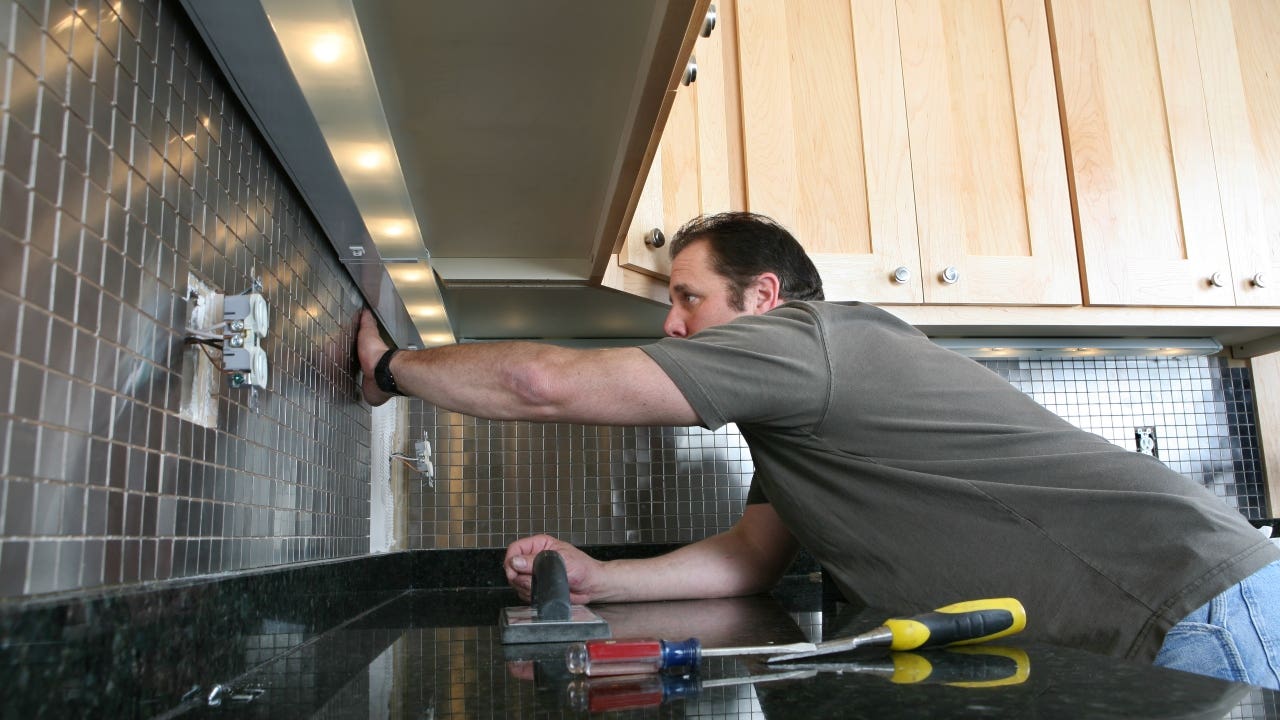VA cash-out refinance: How it works and what to consider




Key takeaways
- Like a conventional cash-out refinance, a VA cash-out refinance turns some of your home equity into cash.
- Unlike conventional cash-out refinances, you may be able to borrow up to 100 percent of your home’s value with a VA cash-out refinance.
- To qualify, you must meet VA guidelines for military service, plus the lender’s requirements. You’ll also pay a funding fee.
What is a VA cash-out refinance?
A cash-out refinance allows you to tap your home equity by replacing your current mortgage with a bigger loan. You get the difference between the two in cash, which you can use, for example, to upgrade your property or pay down debt. A VA cash-out refinance replaces your current mortgage — whether that’s a VA loan or a conventional loan — with a new VA loan.
There are a few differences between a conventional cash-out refinance and a VA cash-out refinance, including:
- You can only get a VA cash-out refinance if you’re eligible for a VA loan, while anyone who meets the financial requirements can get a conventional cash-out refinance.
- Like all VA loan rates, rates for a VA cash-out refinance are typically lower than those for a conventional cash-out refinance, because VA loans are guaranteed by the government.
- While many conventional lenders cap the amount you can borrow in a cash-out refinance at 80 percent of your home value, the VA technically caps it at 100 percent. Keep in mind that many lenders have lower limits.
A VA cash-out refinance involves tapping into the equity in your home and pulling cash out. A VA streamline refinance, officially an Interest Rate Reduction Refinance Loan (IRRRL), is designed to lower the monthly payments on your mortgage. It allows homeowners to refinance an existing fixed-rate VA home loan to a new one of the same amount, typically with a lower interest rate.
How a VA cash-out refinance works
If you’ve been honorably discharged from the military or are currently on active duty, your service to your country comes with a big benefit: the ability to buy a home with a no-down-payment VA loan or to refinance an existing mortgage of another type into a VA loan.
Note that you can only use a VA cash-out refinance on the home you live in, so if you’d like to refinance a loan for an investment property or second home, you’ll need to explore other options.
While the requirements differ, the process to get a VA cash-out refinance is similar to that of a conventional cash-out refinance. Ideally, your new loan has better terms while allowing you to cash out the equity you’ve built in your home.
If you apply for a VA cash-out refinance and are approved, you’ll begin making payments on your new, larger mortgage and use the cash you receive for whatever you want. Home improvements are a common use.
Example of a VA cash-out refinance
Let’s say you took out a $300,000 home loan, and you’ve paid back $100,000 of that balance, but your home is still valued at $300,000. If your lender allows you to borrow 100 percent of your home value, the math in your VA cash-out refinance might look like this:
$300,000 (home value) – $200,000 (amount you still owe) = $100,000 (amount you can cash-out)
VA cash-out refinance rates
You’ll typically pay a little less in interest for a VA cash-out refinance than you would for a conventional cash-out refinance — although your interest rate will probably be few basis points higher than for a VA purchase loan.
Requirements for a VA cash-out refinance loan
To qualify for a VA refinance, you must be an active-duty service member, a veteran who was honorably discharged and meets minimum service requirements, or a surviving spouse. Beyond that, VA cash-out refinance guidelines vary slightly by lender, but you usually need to meet these criteria:
- Obtain your certificate of eligibility (COE)
- Meet your lender’s minimum credit score requirement, generally 620
- Meet your lender’s debt-to-income (DTI) ratio requirement, generally no more than 41 percent
- Demonstrate proof of income
- Pay the VA cash-out refinance funding fee
VA cash-out refinance costs
A VA refinance cash-out loan can be less expensive than other funding options, but you’ll need to pay closing costs to get one. Compare at least three mortgage lenders and their respective origination fees, plus other charges, so you have a sense of how much you’ll need to bring to the table.
In addition to closing costs, you’ll pay the VA cash-out refinance funding fee, which varies depending on your status as a borrower:
- If you’ve never purchased a home with the VA benefit, the VA cash-out refinance funding fee is 2.15 percent of the loan principal.
- If you have used the VA benefit before — for example, if you have a VA loan and you’re refinancing it — the funding fee is 3.3 percent.
You can pay this funding fee upfront, from the proceeds of your loan or by rolling it into your loan. If you roll it into the loan, just remember you’ll pay interest on that amount, too.
Pros and cons of a VA cash-out refinance loan
VA cash-out refinances have many benefits, but there are some drawbacks to consider, too.

Pros
- Quick access to cash
- Usually have lower rates
- Funds can be used for multiple reasons, like home improvement, debt payment or education

Cons
- Must be a current or former military service member to be eligible, or a surviving spouse
- Funding fee applies
- Only valid for primary residence
Should you get a VA cash-out refinance?
If you have a conventional loan, but you qualify for a VA loan, and the higher limits of a VA cash-out refinance will let you borrow the money you need, then it may be a good idea to get one. Cash-out refinances can also be smart moves for existing VA loan holders, provided you also meet these other criteria:
- You can get a better rate or terms on your new loan than you have on your original loan.
- You’re confident you can cover your new mortgage payment.
- You’ll use the cash in a way that builds your — or your family’s — wealth, such as paying for home improvements with a high return on investment or funding education.
How to get a VA cash-out refinance
To get a VA cash-out refinance, you’ll need to:
- Find a lender. First, you’ll need to identify lenders that offer VA cash-out refinance loans. Then compare rates and reviews for at least three lenders to find the best offer.
- Get your COE. You’ll need to get a certificate of eligibility (COE), which verifies that you meet the service requirements to take advantage of a VA loan. You can request this certificate online, via mail or potentially through your lender.
- Provide your chosen lender with your financials. This usually means handing over your COE, pay stubs, tax returns, bank account statements and other financial documents.
- Complete a home appraisal. Your lender will require a home appraisal in which a third-party examiner will assess the value of your home.
- Close the loan. Your lender will walk you through this paperwork-heavy process to finalize the loan.
- Pay the applicable fees. You’ll likely owe your lender for closing costs, and you’ll need to pay the VA cash-out refinance funding fee, too.
FAQ
Additional reporting by Mia Taylor




